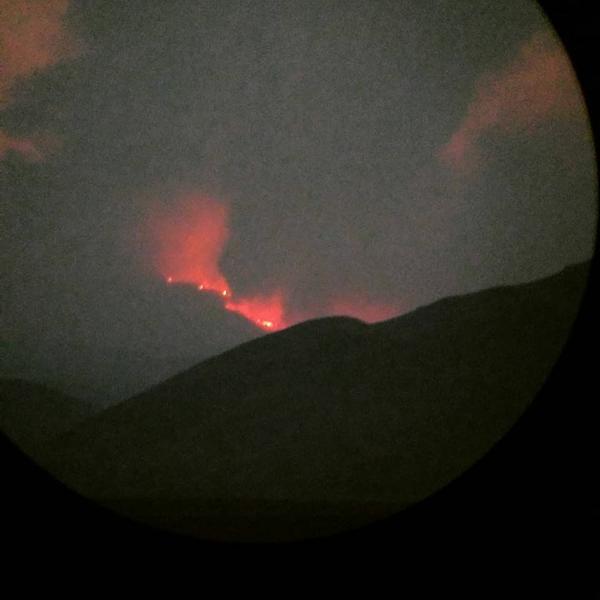
After a long and complicated Monday packing orders this past week, exhausted, we arrived back home in the dark to do chores. But there was a sight in the night that made us halt. We gathered quietly on the patio to watch the fire.
Gale force hot winds blasted the high country of our summer grazing range on Monday. All day. The Rabbit Foot blaze kicked into high gear. Obscured by thick smoke, no one really knew what was happening up there. But as smoky darkness cloaked our broad valley, the wind changed, and reversed from the north. The curtain was pulled back. Now, on the patio behind our log home on Alderspring Ranch, we could see it for the first time.
Even though it was 11 PM, the fire was still an inferno. It lit the sky with an eerie glow, and the flame front could be clearly seen. It was a jagged and brilliant line that stretched for miles across the range. A quick look though binoculars transfixed: far above the sawtooth outline of trees waiting at their queue for their fiery mortality, fireballs of pyrolytic gases ejected high above the burning timber would spontaneously ignite, lighting the smoke filled sky above them. It was like looking at a solar flare. Terrible would be a good word.
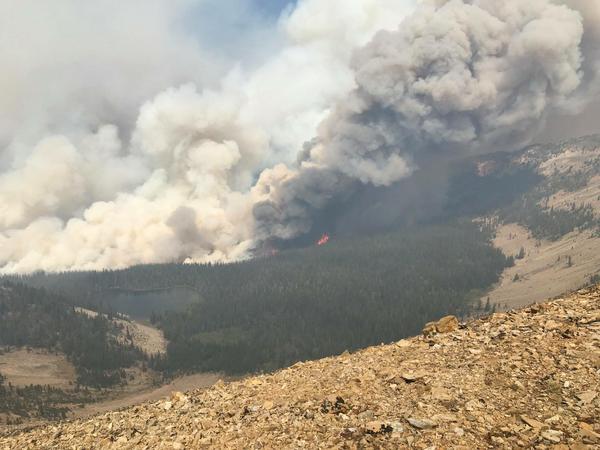
As I handed the binoculars to the waiting hands of daughter Emily, I reflected from my lawn chair how grateful I was that we had proactively moved our cattle to safety just a few days before. Regardless, it would be an uneasy night of rest.
The following morning, reports streamed in over email. The Rabbit Foot had consumed 7000 acres of our Forest Service grazing land in one day. It traveled over 5 miles through dense timber that was so thick it was hard to ride a horse through. It turns out that property was the exact reason the fire was likely so catastrophic. The fire guys categorize it as extreme fuel loading.
Now, we are still waiting, watching weather every day. The fire is 7 miles from our cattle. The roads and jeep trails are teeming with yellow shirted fire personnel driving backcountry fire engines. Loads of materiel are dropped by helicopters and freight trucks in random “drop points” throughout the backcountry. Helicopters and retardant bombers can be heard in the sky all day long.
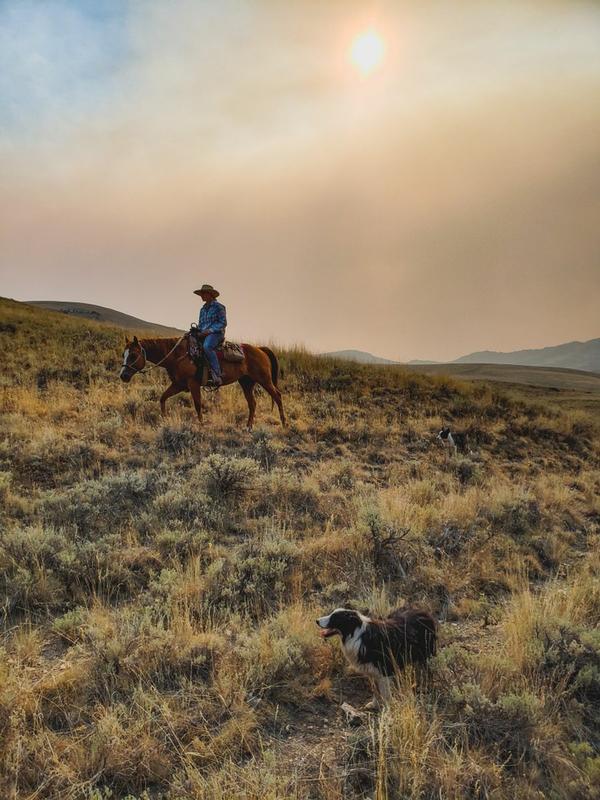 Â As I said, we are safe. The interesting counterpoint is that the fire will actually benefit much of our summer ranges, cleaning out old dead and dying brush and timber that fire has thinned in the past. Nearly all of the habitat up there has adapted to fire for millennia before settlers came. Native Americans actually lit fires to better the grazing for the animals they hunted.
 As I said, we are safe. The interesting counterpoint is that the fire will actually benefit much of our summer ranges, cleaning out old dead and dying brush and timber that fire has thinned in the past. Nearly all of the habitat up there has adapted to fire for millennia before settlers came. Native Americans actually lit fires to better the grazing for the animals they hunted.
Our main concern is for our neighbors who are still trying to find their cattle. And our distant neighbors to the north (10 miles) actually find their residence directly downwind from the blaze. They are scared.
As I said last week, our lives right now are defined by fire.
I’m looking forward to the fall rains.
Happy Trails
Glenn, Caryl, Girls and Cowhands at Alderspring.

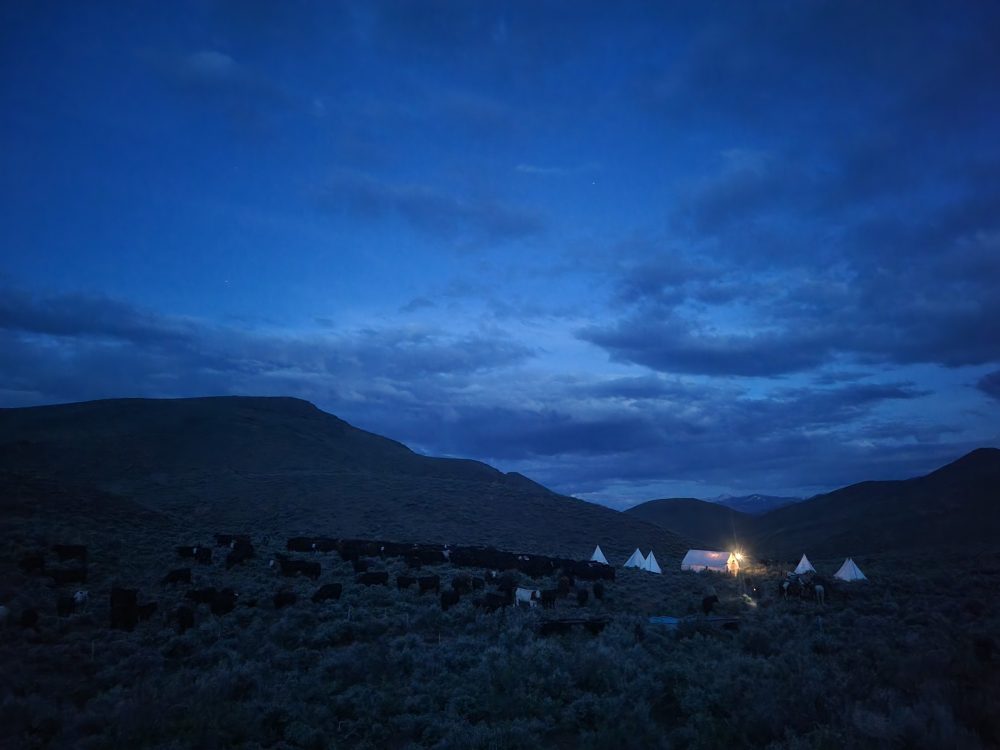

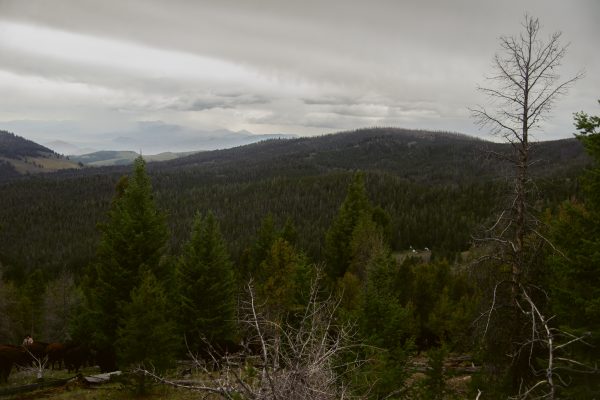
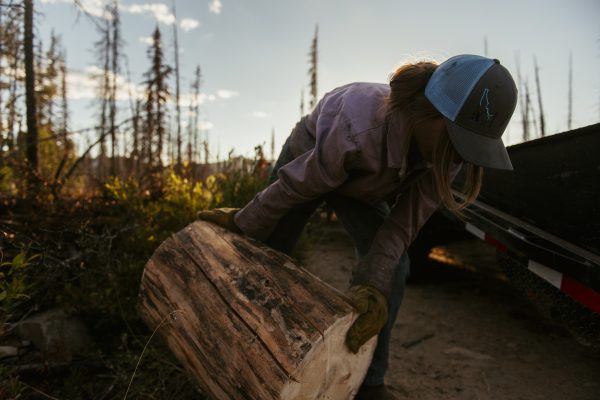
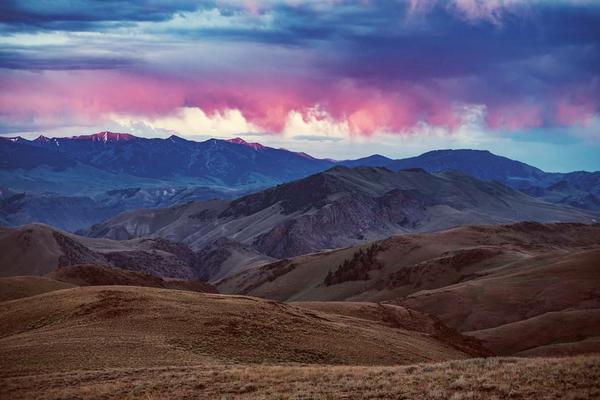
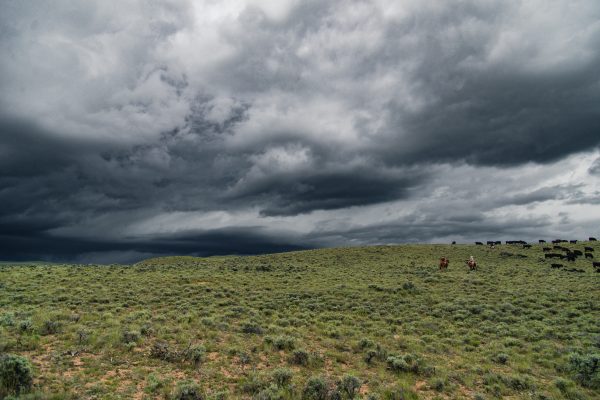
Leave a Reply